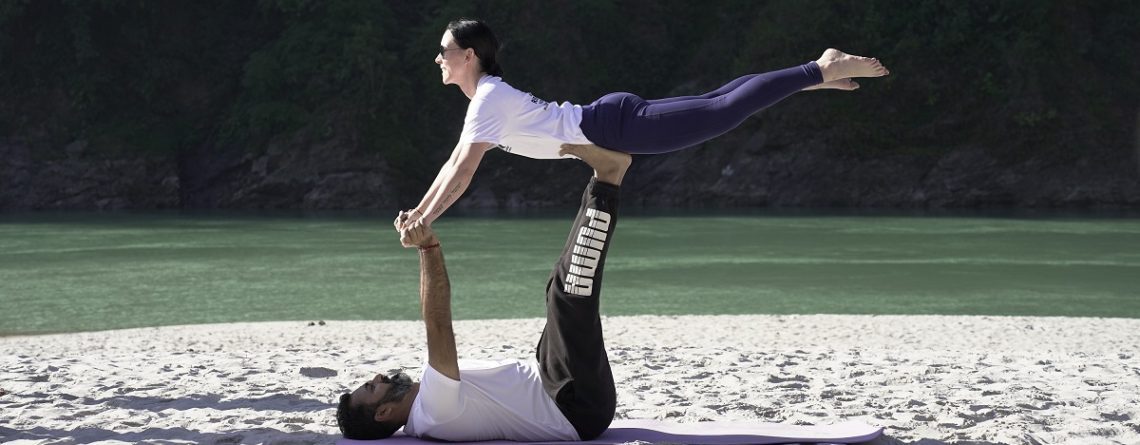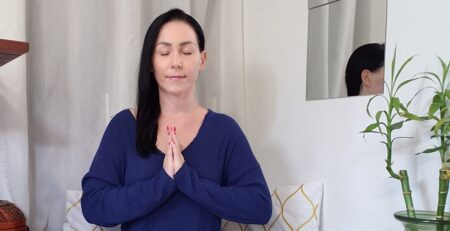Mindfulness Off The Mat: How to Use Yoga in Everyday Life
Over the weekend, I ran a workshop regarding emotional regulation. One of the topics we covered was designing our daily spiritual practice. Of course, yoga, mindfulness and meditation were on the list of things we can use to support our nervous system and deepen our relationship with ourselves.
Because of yoga, my life has changed tremendously. I am not talking about the physical part of it. I am sure you can find sufficient information about it all over the Internet.
What I want to share with you are the emotional, mental, and spiritual benefits it has brought to my life and redefined what healing my trauma and living more joyfully means to me. It’s my deepest desire that this ancient practice and what I teach you can create the same for you.
Yoga has been around for thousands of years, shaping and redefining how we live and heal. Although this powerful ancient teaching can transform life at its core, the wisdom of this practice goes well beyond yoga asanas.
The question is: How can we utilize mindfulness we learn in the class (or with our favorite YouTube channel at home) and apply it to our life off the mat too?
Yoga and Mindfulness
Based on a traditional school of yoga, the physical part of the practice is an entrance into reaching deeper meditative states and, therefore, improving our mental and emotional well-being.
One of the most sought ancient yogic texts that set a foundation for yoga practice is Yoga Sutras, a collection of 195 sutras written by Patanjali.
Based on the 8 limbs of yoga that Patanjali designed as a roadmap to achieve the highest states of this practice, asanas (poses) were to be mastered before pranayama (breathing exercises) and meditation, which eventually led to enlightenment.
By understanding the 8 limbs, it is clear that asanas come before other aspects of yogic practices. Since active body movements are more dynamic, they keep our minds busy and easily preoccupied. Therefore, it is considered the “easier” part of yoga.
Then, it follows pranayama, which constitutes our breath, also known as the life force. During this stage, our body and mind require more stillness since the only movement is our breath or hand gestures (mudras). It is also where the power of mindfulness becomes more obvious.
Once the person masters asanas (poses) and pranayama (breathing), the time to move to meditation while embracing complete stillness begins.
The good news is that we don’t have to strictly follow the ancient practices of yoga (or be deeply spiritual) to practice mindfulness and reap more mental and emotional benefits off the mat.
Let’s look at three simple tools yoga provides and how we can implement them in everyday life.
1. Breath
While practicing yoga, set an intention to be fully mindful of your breath. Although your yoga teacher repeatedly reminds you to focus on it, your mind can easily wander around. Setting an intention to cultivate mindful breathing before practice helps you maintain awareness.
Although yoga combines slow and rapid breathing, this study explains how slow, deep breathing lowers anxiety and depression and manages stress.
However, you don’t have to practice mindful breathing only on the mat but take this powerful tool wherever you go. The power of yoga doesn’t lie in performing the perfect downward dog. It’s about increasing the quality of our life off the mat.
2. Increased awareness
There are three main areas yoga encourages us to focus on: our breath, gaze, and body posture. All these elements contribute to improved mindfulness since they deepen our awareness and stillness in the present moment.
During my practice, I found two great benefits that increased self-awareness brings. First, it allows me to develop a more intimate relationship with myself. I learn to pay attention to what I feel and think while being completely present. Second, I’ve trained myself to observe while cultivating stillness. Therefore, I am less reactive and more responsive to what’s happening around me.
3. Body Acceptance
As aspiring yogis, we come to the mat with one goal: to feel good. However, our mind is a wild animal. If you are anything like me, you may find yourself 20 minutes into your practice, comparing yourself to a person next to you while feeling inadequate because your forward bend isn’t deep enough.
Although a significant part of yoga is about deepening a relationship with who we are, we can easily end up in a mental competition with others or ourselves. This is where exercising mindfulness makes a difference.
Based on one study, “body dissatisfaction has been found to be a predictor for the development of an eating disorder and occurs in individuals with different mental disorders such as binge eating disorder and social anxiety disorder.”
Using Mindfulness to Minimize Body Shaming
In other words, self-judgment and self-shaming of bodily restrictions or physical appearance affects our self-image and overall quality of life.
By being mindful of your inner dialogue, we can start developing a healthier self-image. Your yoga practice is a great place to embrace your body limitations. It encourages “perfect imperfections” and allows you to meet yourself where you are mentally, emotionally, and physically.
Once you become aware of self-judgment during your practice, you can use this awareness off the mat and stop it when it shows up.
Since yoga has become more of a trend to follow, I invite you to redefine what this ancient practice means to you.
In other words, “How can you use the power of mindfulness when you walk out of the yoga studio into real life?”












Comments (2)
Thank you very much for including me in your posts.
I love reading them and learning about them.
You’re most welcome!